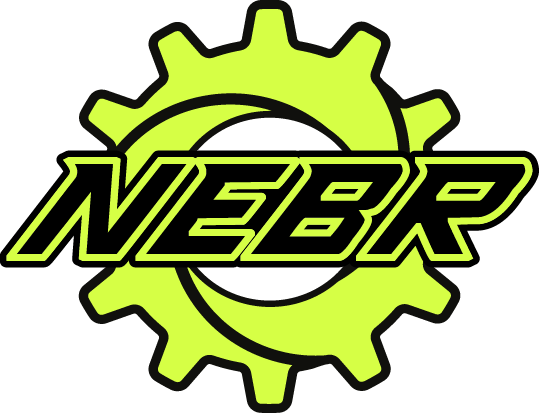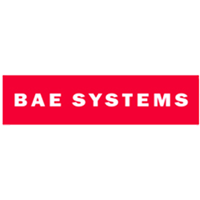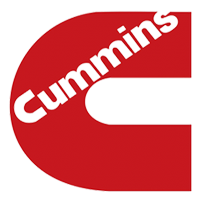Diesel prices spike, riders demand cleaner air, and city councils wave stricter emissions targets—sound familiar? If so, you’re likely wondering whether a hybrid bus or a full battery-electric model is the smarter next step for your fleet.
Choosing the right hybrid electric bus can provide your fleet with enhanced fuel efficiency, reduced emissions, and lower operating costs—all while maintaining reliable performance for your transit needs.
At NEBR, we’ve spent over 25 years working on hybrid electric bus drivetrains, and we can tell you that hybrids hit a sweet spot most operators overlook: diesel-like range plus big environmental and operational wins.
Inside a Hybrid Electric Bus—What’s Under the Floor?
Before adding hybrid electric buses to your fleet, it helps to understand what’s going on under the hood—or more accurately, under the floor. A hybrid bus may look like any other vehicle on the outside, but its internal systems are what make all the difference.
From regenerative braking to dual power sources, these buses are engineered to balance performance, efficiency, and sustainability in ways traditional diesel models simply can’t.
Parallel vs. Series Hybrids
- Parallel hybrids let the diesel and electric motor push the wheels together, giving you extra torque whenever you need it.
- Series hybrids run the diesel only as a generator. Wheels see pure electric drive, great for stop-and-go downtown loops.
Both capture braking energy (regeneration) and store it in lithium-ion packs or ultra-capacitors. That free energy is why a modern hybrid electric bus often posts 20-40 percent fuel savings without any charging infrastructure.
The Environmental Edge
When it comes to sustainability, the hybrid electric bus stands in a league of its own. As cities and companies push for greener transportation options, hybrid buses offer a powerful way to reduce emissions without sacrificing performance.
This isn’t just good for the planet—it also boosts your public image and compliance with tightening environmental regulations.
Actual Emissions Drops in Mixed-Traffic Routes
| Metric (40-ft bus) | Conventional Diesel | Modern Hybrid Electric Bus | % Improvement |
| CO₂ (g/mile)* | 2,100 | 1,350 – 1,550 | 25 – 35 % |
| NOₓ (g/mile) | 17 | 8 – 9 | 45 – 55 % |
| Brake Dust (g/mi) | High | Very Low | ~70 % drop |
| Idle Emissions | Steady ↑ | Near zero (engine off) | 90 % drop |
*FTA composite duty-cycle data, 2024.
What most people miss: Those gains get bigger on the slow, congested routes where traditional diesels idle and gulp fuel. The hybrid bus shines when speeds bounce between 0-25 mph—exactly the profile of city circulators and university shuttles.
Operational Benefits of Hybrid Electric Buses
Switching to a hybrid electric bus isn’t just a win for the environment—it’s a smart financial move, too. From lower fuel consumption to reduced wear on key components, hybrid buses offer tangible operational savings that add up over time.
Fuel-Cost Volatility Shield
Cutting 25 percent off your diesel fuel costs isn’t just good for the environment—it helps stabilize your budget when prices swing from $2.90 to $4.80 per gallon. A typical 40-foot hybrid electric bus saves about 3,500 gallons a year versus a diesel. At $4/gal, that’s $14,000 off your fuel budget—per bus.
Parts & Labor Savings You Never Budgeted
- Brake life: Regen braking means pads and rotors last 60 percent longer.
- Transmission & axles: Electric launch torque reduces shock loads, stretching rebuild intervals by roughly 20 percent.
- DPF/DEF headaches: Far fewer active regens and DEF top-ups because the diesel stays in its sweet spot.
Quiet Zones & Rider Satisfaction
Sound tests put a hybrid bus at ~72 dB while rolling—quiet enough for late-night routes without disturbing residential streets. Operators also notice less fatigue, thanks to the reduced vibration during operation.
This quieter ride isn’t just a perk for passengers—it also creates a calmer work environment for drivers, improving focus and reducing long-term stress. Plus, reduced noise pollution helps cities meet environmental and community standards, making hybrid electric buses a neighbor-friendly option for urban routes.
Total Cost of Ownership—A Breakdown
If you’re thinking about switching to hybrid electric buses, it’s crucial to look beyond the initial sticker price. The real savings show up over time through fuel efficiency, reduced maintenance, and longer component life.
Let’s break down the total cost of ownership (TCO) and see how a hybrid bus can deliver serious value over the long haul:
| Five-Year Cost Bucket (40-ft) | New Diesel | New Hybrid Bus | Notes |
| Purchase Price (2025) | $540 k | $620 k | $80 k Delta |
| Fuel (5 yrs @ $4/gal) | $280 k | $210 k | 25 % Saving |
| Routine Parts & Fluids | $92 k | $68 k | Fewer pads, DEF |
| Unexpected Road Calls | $22 k | $13 k | Regen benefits |
| Residual Sale Value (Yr 6) | $175 k | $210 k | ESG premium +20 % |
Net 5-year advantage: ≈ $79 k in favor of the hybrid electric bus—payback in < 4 years even without grants.
Depot & Infrastructure Reality Check
Compared to full electric buses, hybrid buses usually need less infrastructure—but there are still a few things to keep in mind. Unlike a full battery EV, a hybrid bus needs no megawatt chargers or grid upgrades. What you might add:
- 208 V outlets for overnight battery conditioning
- A dedicated high-voltage lock-out kit in your maintenance bay
- Basic regen brake test equipment (NEBR supplies training and tools)
In most depots we upgrade, the electrical work costs less than replacing one diesel particulate filter. This makes the transition to hybrid buses not only environmentally smart but also financially practical, minimizing upfront infrastructure expenses and hybrid drivetrain repair, while maximizing long-term savings.
Hybrid Bus Technology: Frequently Asked Questions
How do hybrid buses reduce emissions compared to traditional diesel buses?
Hybrid buses use a combination of diesel engines and electric motors, along with regenerative braking, to significantly lower emissions like CO₂ and NOₓ—often by 25-55%. This results in cleaner air and helps transit agencies meet stricter environmental regulations.
What kind of maintenance savings can fleets expect with hybrid buses?
Hybrid drivetrain repair is often more affordable than full engine replacements, making it a cost-effective option for extending the life of your hybrid vehicle.
A study by the National Renewable Energy Laboratory (NREL) analyzing UPS delivery vans found that while hybrid vans had a slightly higher propulsion-related maintenance cost per mile ($0.037) compared to diesel vans ($0.029), the overall operating costs, including fuel savings, were 10% lower for hybrids.
Hybrids also reduce wear on brakes, transmissions, and emissions systems due to regenerative braking and optimized engine operation, extending part lifespans and lowering maintenance costs by up to 20-60%, depending on the component.
Does a hybrid bus need charging stations?
No. A hybrid electric bus charges its battery on the fly through regenerative braking and the onboard generator. That’s why infrastructure costs are minimal compared to battery-electric buses.
Can NEBR service both diesel and hybrid buses in the same fleet?
Absolutely. Our technicians hold high-voltage certifications and diesel ASE master credentials, so one contract covers your mixed fleet.
Are commercial hybrid buses cost-effective for city transit fleets?
Yes, hybrid buses are cost-effective for city transit fleets. They offer significant fuel savings—typically 20-40%—lower maintenance costs thanks to regenerative braking and reduced engine wear, and improved resale value. Over a typical 5-year lifecycle, these savings can offset the higher upfront price, making hybrids a smart financial choice for cities aiming to reduce operating costs while meeting environmental goals.
Addressing Common Concerns About Hybrid Buses
It’s natural to have questions or concerns when you’re thinking about adding hybrid electric buses to your fleet. From battery life to performance in harsh weather, fleet managers want clear, straightforward answers before making the leap.
| Concern | Explanation |
| How long do battery packs last? | 8–10 years / 300-400 k miles; modules can be swapped without pulling the bus from service for weeks. |
| What about winter range? | Engine-on heat plus insulated pack keeps performance within 5 % of summer numbers—better than BEV in cold climates. |
| Fire risk? | Current hybrid packs use liquid-cool battery trays with thermal runaway detection. No recorded pack fires in NEBR-serviced fleets (5 years, 9 million miles). |
| End-of-life disposal? | Battery OEMs run take-back programs; NEBR coordinates recycling credits into your TCO plan. |
Where NEBR Fits In
NEBR isn’t just a shop; we’re the aftermarket laboratory for every major hybrid drivetrain supplier.
- 24/7 diagnostic hotline with remote data pulls so you know a fault code before the dash light blinks.
- OTA firmware updates every quarter—tweak regen aggressiveness, optimize shift points, extend battery life.
- High-voltage safety training for your in-house techs, plus loaner battery-pack saddles.
- Turnkey retrofit programs: we pull a diesel, drop in a hybrid module, and have it back on route in as little as seven working days.
Switching to a hybrid electric bus isn’t just an environmental badge—it’s a practical way to slash fuel bills, tame maintenance headaches, and future-proof your fleet against tightening emissions rules. And because a hybrid bus sidesteps the charger-installation hurdle, you can deploy them now while the grid—and your budget catches up.
Bottom line: Hybrid buses are greener, quieter, and cheaper to operate. That’s a trio diesel can’t beat. When you’re ready, NEBR is here with the tools, techs, and real-world know-how to keep every kilowatt and gallon working in your favor.
Ready to upgrade your fleet with hybrid electric buses? Contact NEBR today and experience the benefits firsthand.













